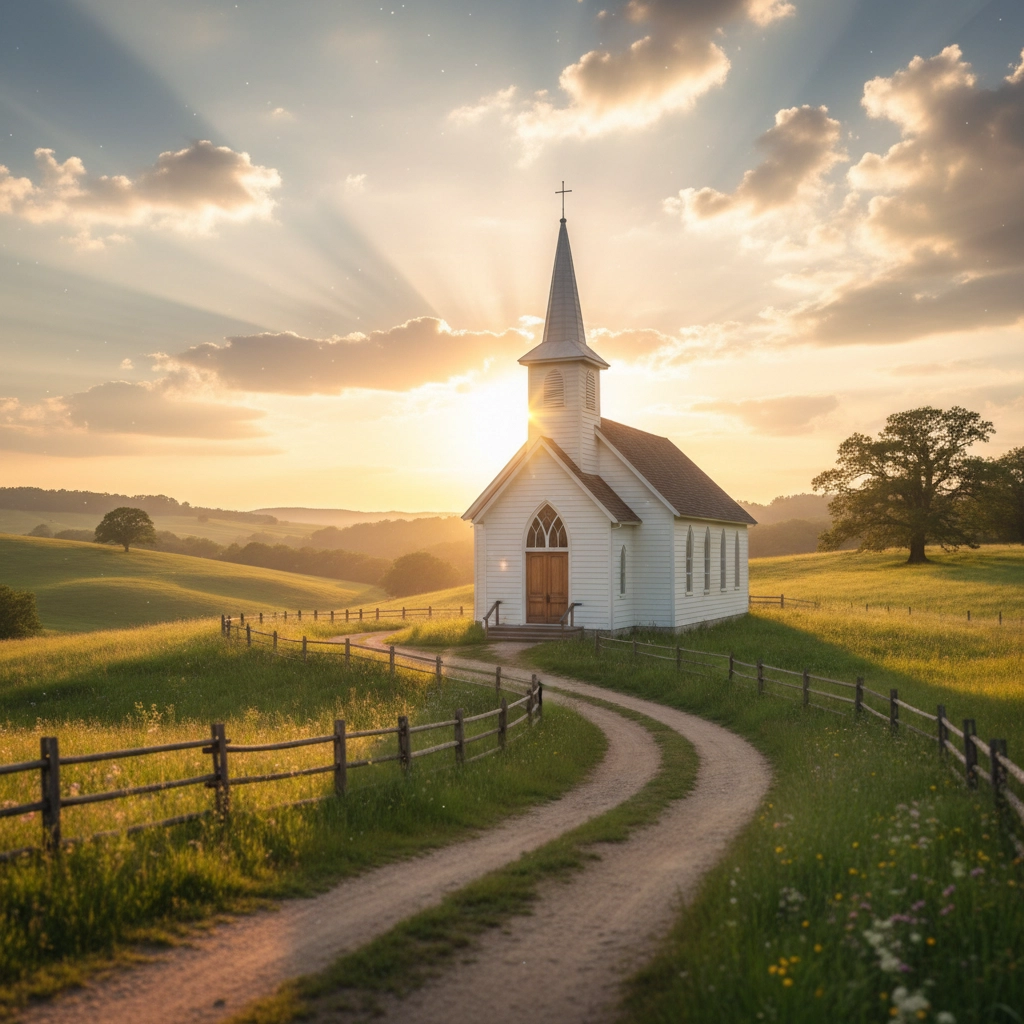Are Small Church Leaders Dead? 7 Reasons Rural Pastors Are Leading the Next Revival
- Layne McDonald
- Oct 30
- 5 min read
The critics have been writing obituaries for small church leadership for decades. "Rural churches are dying," they say. "Small-town pastors are just stepping stones to bigger things." But here's what they're missing: while everyone's been focused on megachurch models and urban growth strategies, something remarkable has been quietly happening in America's heartland.
Rural pastors aren't just surviving: they're leading a revival that's reshaping how we think about authentic Christian leadership. The numbers tell a story that contradicts every decline narrative you've heard.
The Great Narrative Shift
For too long, rural ministry has been viewed as a training ground: a place where young pastors cut their teeth before moving on to "real" ministry in larger congregations. That mindset is not only outdated, it's dead wrong.
Today's rural church leaders are changing the conversation entirely. Among Gen X, Millennial, and even Boomer pastors, there's a renewed calling to plant roots in rural communities. The metaphor has shifted from "steppingstones" to "roots," and pastors are making long-term commitments to these congregations like never before.

This isn't desperation: it's vision. These leaders see what the rest of us are just beginning to understand: rural America is where authentic Christian leadership is being redefined for the next generation.
7 Reasons Rural Pastors Are Leading the Next Revival
1. They're Measuring What Actually Matters
While urban churches obsess over attendance metrics, rural pastors have discovered something profound: genuine spiritual transformation doesn't always show up in pew counts.
In the past 12 months alone, the median rural congregation has seen five new commitments to Jesus Christ. Nearly two-thirds of rural churches report between one and ten new decisions for Christ. That's not decline: that's discipleship.
Rural pastors prioritize: • Salvations over statistics • Care over crowds • Forgiveness over flashiness • Serving over size
When you measure what matters, you discover that many small churches are spiritual powerhouses disguised as statistical disappointments.
2. Their Optimism Is Contagious (And Data-Backed)
Here's a statistic that'll blow your mind: almost 9 in 10 rural pastors (88%) expect their churches to be stronger in 10 years. Over half of them strongly agree with that statement.
This isn't naive wishful thinking. It's faith-based leadership that trusts in God's capabilities rather than demographic trends. When leaders genuinely believe in the future, that confidence becomes the foundation for everything else they build.

3. They're Outpacing Larger Churches in Recovery
While megachurches struggle to regain their pre-pandemic momentum, small churches are quietly winning the recovery race. A remarkable 23% of pastors at small churches (fewer than 50 in attendance pre-pandemic) report being at 90-100% of their previous attendance rates.
That's significantly higher than larger congregations. Why? Small churches are more nimble, more connected to their communities, and more capable of adapting quickly to changing circumstances.
4. They've Abandoned Unsustainable Growth Models
Rural pastors have made a crucial discovery: attendance isn't the primary indicator of church health. They're shifting from attendance-focused metrics to engagement-centered evaluation.
This isn't giving up on growth: it's redefining what healthy growth looks like: • Discipleship depth over crowd size • Community involvement over building capacity • Spiritual formation over statistical formation • Mission impact over membership metrics
Since most rural communities aren't growing demographically, this shift isn't just practical: it's theologically sound.
5. They're Attracting Leaders Who Want Authentic Living
The simple life of rural and small-town areas is becoming increasingly attractive to church leaders. In our age of urbanization fatigue, rising city costs, and hunger for authentic community, rural areas offer something that can't be manufactured: genuine connection.
This creates both demographic opportunities and a renewed pool of potential leaders who are genuinely called to rural ministry: not using it as a stepping stone.

6. They're Riding the Wave of Stabilizing Decline
Here's some encouraging news: the broader trend of Christian decline in America appears to be slowing and may have leveled off. The steepest decline phase may be behind us.
For rural churches that weathered the worst of the secularization wave, this stabilization represents a golden opportunity for recovery and renewal. They're positioned to lead the comeback.
7. They're Building Engagement, Not Just Expansion
Rural church leaders have matured beyond chasing growth their communities can't support. Instead, they're building deeply engaged congregations focused on: • Spiritual formation that transforms lives • Community service that demonstrates Christ's love • Authentic witness that draws people naturally • Sustainable ministry that lasts generations
This approach is both more sustainable and more aligned with rural communities' actual needs and character.

The Real Challenge Isn't Death: It's Transformation
Let's be honest about the obstacles. Rural churches still face real challenges: difficulty securing full-time pastoral leadership, low ministerial salaries leading to turnover, and the ongoing migration of younger families to urban centers.
But here's what critics miss: these challenges haven't deterred the growing number of leaders who are finding their calling in rural communities. Instead, they've sparked innovation, creativity, and a deeper dependence on God that urban churches often lack.
Rural pastors are proving that you don't need a massive budget, state-of-the-art facilities, or a huge staff to make a kingdom impact. You need vision, faith, and a commitment to the long game.
What Urban Churches Can Learn
The revival happening in rural America isn't just good news for small towns: it's a master class in authentic leadership that every church can learn from:
• Authentic relationships over impressive programs • Deep discipleship over wide reach • Community connection over building expansion • Sustainable ministry over spectacular events
Rural pastors aren't just leading a geographical revival: they're leading a philosophical one. They're showing us what church leadership looks like when it's stripped of all the nonessentials and focused on what actually transforms lives.

The Future Is Bright
Small church leaders aren't dead: they're just getting started. The narrative isn't one of death but of transformation: from growth-focused metrics to mission-focused ministry, from transient leadership to rooted community presence, from discouragement to faith-filled optimism about God's work in rural America.
If you're a leader in a small church, don't let anyone convince you that you're in a dying field. You're in the most important field there is: making disciples, loving communities, and demonstrating what authentic Christian leadership looks like in a world hungry for the real thing.
The revival is coming, and it's not starting in the megachurches or the metropolitan areas. It's starting in the places where leaders have learned to trust God more than demographics, where success is measured in transformed lives rather than full pews, and where the future is built one faithful relationship at a time.
Ready to develop your leadership in ways that create lasting impact? Whether you're leading a small rural church or a growing urban congregation, authentic Christian leadership principles remain the same. Explore our coaching programs designed specifically for church leaders who want to build ministries that transform communities. Plus, check out our leadership books and workshops that will help you lead with both heart and wisdom. Don't just survive your leadership challenges: thrive through them with proven biblical strategies that work in any context.

$50
Product Title
Product Details goes here with the simple product description and more information can be seen by clicking the see more button. Product Details goes here with the simple product description and more information can be seen by clicking the see more button

$50
Product Title
Product Details goes here with the simple product description and more information can be seen by clicking the see more button. Product Details goes here with the simple product description and more information can be seen by clicking the see more button.

$50
Product Title
Product Details goes here with the simple product description and more information can be seen by clicking the see more button. Product Details goes here with the simple product description and more information can be seen by clicking the see more button.




Comments